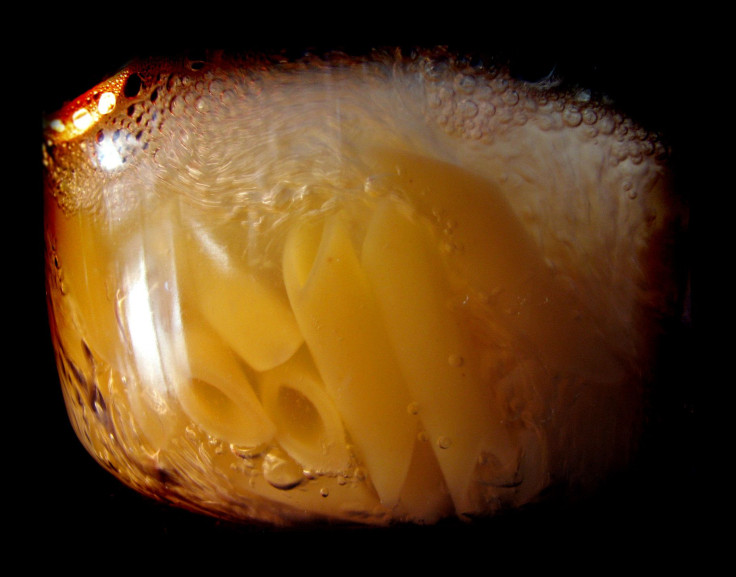2 Cooking Techniques To Significantly Cut Calories In Your Favorite Carbs

In 1981, Dr. David Jenkins, a physician at Michael’s Hospital in Toronto, Canada, became the first to illustrate how not all carbohydrates are created equal even if they’re consumed with the same amount of calories. Jenkins demonstrated how they can have different effects on blood glucose (sugar) levels, and out of this, the glycemic index was born. The index allowed physicians and dieticians to rank a carbohydrate by how quickly or slowly they raised sugar levels in the blood.
Rice and pasta are two of the most commonly consumed carbohydrates in the world. They are rapidly digested and absorbed into the bloodstream as sugar. If the sugar isn’t burned off, it turns into fat, which leads to a spike in blood glucose levels — bad for both diabetics and those looking to lose or maintain weight. In recent years, scientists have discovered how to cut calories in these popular carbohydrates with a simple cooking technique.
Cutting Calories with Rice
A new method for cooking rice was first presented in 2015 at the 249th National Meeting and Exposition of the American Chemical Society. By increasing the concentration of resistant starch (RS), researchers were able to create a new variety of rice that cut the amount of calories the body absorbed by 50 to 60 percent. RS acts more like fiber than a carbohydrate in the body because it doesn’t break down into simple sugars in the small intestine, which in turn leads to a better glycemic response in the body.
According to the Calorie Control Group, blood sugar levels begin to rise once a person consumes carbohydrates. Foods with higher levels of fiber slow the glycemic response, which helps prevent the blood sugar levels from spiking. The study’s lead researcher Sudhair James believes increasing the RS content in starchy foods like rice — a dietary staple for more than half the world’s population — could help curb obesity rates.
James and his research team experimented with 38 different types of rice native to Sri Lanka. First, they added half a cup of uncooked rice to boiling water, and then a teaspoon of coconut oil. Then, once the rice had simmered for 40 minutes, they let it refrigerate for 12 hours. Consumers could then reheat the rice at their leisure and it would have no effect on the RS content.
"Your liver and muscles store glycogen for energy and quickly turn it back into glucose as needed,” James explained in a press release. "The issue is that the excess glucose that doesn't get converted to glycogen ends up turning into fat, which can lead to excessive weight or obesity."
In addition to making rice more fiber-like and filling, a higher proportion of RS also has the added benefit of making more of the rice indigestible. There are 1.6 ounces of both indigestible and digestible starch in one cup of rice. Humans don’t have the enzymes to digest RS, so with more of it being RS, it can’t be transformed into sugar or be absorbed into the bloodstream.
Once researchers realized they could turn the digestible rice into RS and ultimately lower the amount of usable calories per cup, they decided their next step would be to test the special rice on obese patients. Those results are forthcoming.
Pasta Leftovers Lower Calories
Spaghetti, rigatoni, penne, and lasagna are among the many beloved pasta dishes served in America and throughout the world. When a carbohydrate like pasta is consumed, the body quickly absorbs it into the bloodstream as a simple sugar, which raises blood-sugar levels. People love pasta, and global sales reflect the world’s love for it. In 2003, annual sales in the United States reached $13 billion, and analysts predict it will hit $19 billion this year.
Since it seems people aren’t going to slow down with their pasta-eating habits anytime soon, researchers decided to try and make it healthier. An experiment conducted on BBC’s show Trust Me, I’m a Doctor, revealed that by just cooking, cooling, and then reheating pasta, it can be turned into a resistant starch (RS) — the same effect seen in RS rice. Again, the body treats the cooled pasta more like a fiber than a carb-heavy starch and absorbs fewer calories.
In an experiment, participants were asked to eat hot, cold, or reheated pasta on an empty stomach while their blood samples were taken every 15 minutes for two hours. On day one, participants ate freshly cooked pasta with a tomato and garlic sauce. On day two, they ate the same pasta after it had been chilled overnight. And on day three, they got to eat pasta after it was chilled, then reheated.
It turns out that simply manipulating when and how the pasta was cooked reduced participants’ increases in blood sugar by 50 percent. By reducing blood sugar levels, participants were left feeling fuller for longer because the starch was digested more slowly. Researchers plan on working with Diabetes UK to study whether adding RS foods to a person’s diet could help a diabetic manage and improve their blood sugar levels and keep them from dangerously sharp sugar spikes.



























